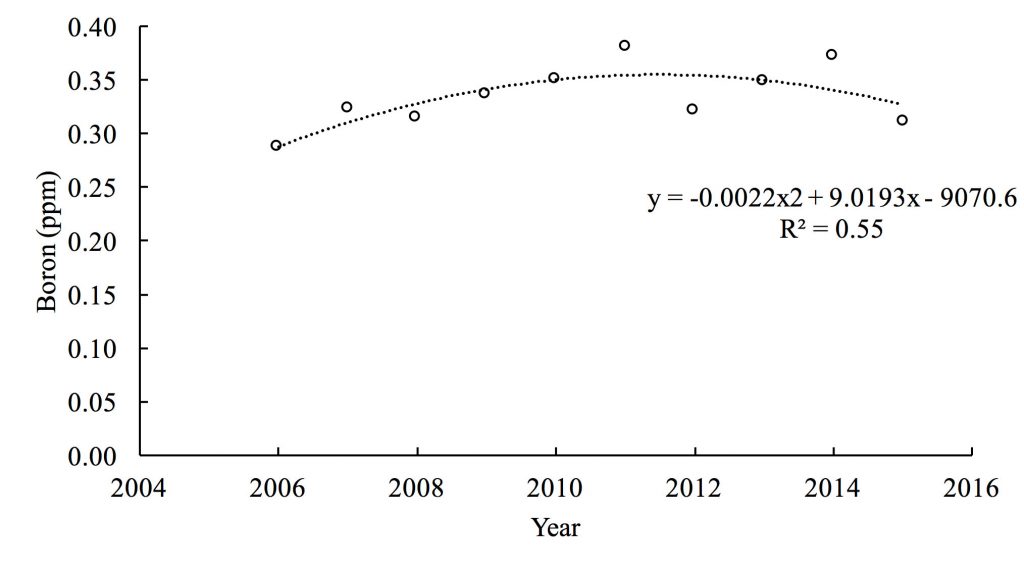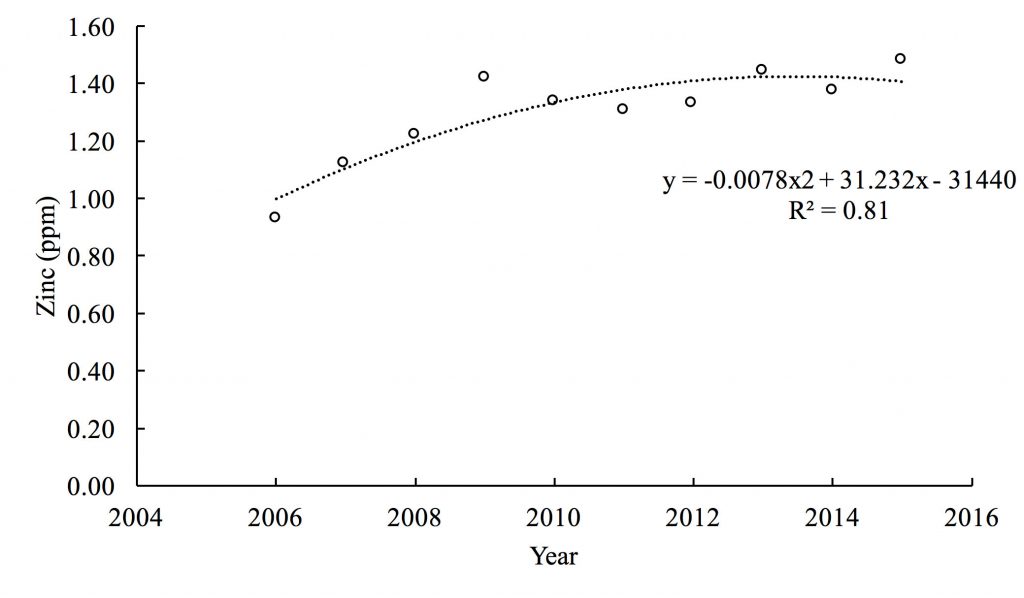Bulletin #1083, Potato Farmers in Aroostook County, Maine, Should Test for Soil Micronutrients and Correct as Needed
Developed by Lakesh Sharma, University of Maine Cooperative Extension Assistant Professor of Sustainable Agriculture, and Sukhwinder Bali, Assistant Professor of Sustainable Agriculture, University of Maine Cooperative Extension
For information about UMaine Extension programs and resources, visit extension.umaine.edu.
Find more of our publications and books at extension.umaine.edu/publications/.
Boron, iron, zinc, manganese, and copper are considered “micronutrients” for potatoes. This means that potatoes need minimal amounts of these elements to grow and flourish. But those small amounts are truly essential.
Why soil micronutrient levels matter to Aroostook County potato farmers
Boron (B) is critical for the production of high-quality crops by aiding in the synthesis of proteins and the germination of pollen. Iron (Fe) and zinc (Zn) are both used for the production of chlorophyll, which is needed for photosynthesis. Manganese (Mn) is used for nitrogen metabolism and helps develop chloroplasts, within which photosynthesis occurs. Copper (Cu) and all of the other micronutrients assist in the creation of vital enzymes.
Importance of potato crops in Maine
Potatoes are Maine’s most valuable agricultural commodity, worth almost $174 million per year. About 47,000 acres of potatoes are grown in Maine, 90% of which are grown in Aroostook County.1
What was done
UMaine Extension analyzed data from soils sampled from Aroostook County between 2006 and 2015 to determine the micronutrient levels in the rooting zone. Each year, mostly in spring and autumn, farmers and home gardeners send soil samples to UMaine Soil Lab. The lab processes an average of ~1,100 potato soil samples yearly. The lab provides chemical analysis and fertilizer recommendations relevant to the intended crop. The majority of soil samples tested from Aroostook County during this period were intended to grow potatoes.
Recommended soil boron level for potatoes
The UMaine Cooperative Extension guidelines for optimum soil test B for potatoes are 0.5–1.2 parts per million (ppm) or 1–2.4 lbs/acre.
Boron results2
Significant differences in B levels were found across the years, with a maximum B level in 2011 and a minimum in 2006 (Figure 1). After 2006, B in the soil began to increase until 2015, when a decrease was recorded, leaving the B level on par with 2012 and 2008. The overall correlation was found to be strong, with increasing B levels over the years (R2 = 0.55). This trend in B levels in the soil for all crop years (potato and rotation crops) was similar to that recorded in years when the main crop was potatoes.

Because B is an essential micronutrient and it is below the critical required amount in the soil tests, it may require immediate attention. It is crucial to apply B at the optimum application rate as recommended by the UMaine Soil Lab because excessive B could be toxic to plants. To correct B deficiency if the soil test result is low, apply ~1 lb/acre of B to fields intended to grow potatoes. However, to correct in-season B deficiency, the application rate should be in the range of 0.2–0.4 lb/acre.
Recommended soil iron level for potatoes
The UMaine Cooperative Extension guidelines for optimum soil test Fe for potatoes are 6–10 parts per million (ppm) or 12–20 lbs/acre.
Iron results
No significant change was found in soil Fe levels (data not shown), and Fe was in the optimum range in the soil tests. However, an increase in pH could release more phosphorus (P) that is bound to Fe in soil.
Recommended soil zinc level for potatoes
The UMaine Cooperative Extension guidelines for optimum soil test Zn for potatoes are 1–2 parts per million (ppm) or 2–4 lbs/acre.
Zinc results
In 2009, Zn levels were higher than in all other recorded years, but significantly low Zn levels were recorded in 2006 (Figure 2). Since 2010, Zn levels have been stable, but even if 2009 is excluded, there has been a gradual increase in Zn levels. In years with potatoes as the main crop, the maximum Zn levels were recorded in 2013. Though the minimum Zn levels were found in 2006, Zn levels were similar irrespective of crop.

Recommended soil copper level for potatoes
The UMaine Cooperative Extension guidelines for optimum soil test Cu for potatoes are 0.25–0.60 parts per million (ppm) or 0.5–1.2 lbs/acre.
Copper results
Soil Cu levels were in the optimal range throughout the study period (data not shown).
For more information, contact:
Lakesh Sharma, Soil Specialist
Assistant Professor, Extension & Sustainable Agriculture
University of Maine Cooperative Extension, Presque Isle Office
57 Houlton Road
Presque Isle, Maine 04769
Office Phone: 207.764.3361
Fax: 207.764.3362
Cell: 207.498.0316
lakesh.sharma@maine.edu
Lakesh Sharma Staff Directory Listing
1 Data from USDA National Agricultural Statistics Service Quick Stats
2 Note that the results discussed throughout this publication are for the average of all relevant soil tests submitted. Before applying amendments to any field, you should submit a soil test to the UMaine Soil Lab and follow the recommendations based specifically on your results. This fact sheet is intended to alert potato farmers in Aroostook County, Maine, of potential nutrient issues with their soils.
Information in this publication is provided purely for educational purposes. No responsibility is assumed for any problems associated with the use of products or services mentioned. No endorsement of products or companies is intended, nor is criticism of unnamed products or companies implied.
© 2018
Call 800.287.0274 (in Maine), or 207.581.3188, for information on publications and program offerings from University of Maine Cooperative Extension, or visit extension.umaine.edu.
In complying with the letter and spirit of applicable laws and pursuing its own goals of diversity, the University of Maine System does not discriminate on the grounds of race, color, religion, sex, sexual orientation, transgender status, gender, gender identity or expression, ethnicity, national origin, citizenship status, familial status, ancestry, age, disability physical or mental, genetic information, or veterans or military status in employment, education, and all other programs and activities. The University provides reasonable accommodations to qualified individuals with disabilities upon request. The following person has been designated to handle inquiries regarding non-discrimination policies: Director of Institutional Equity and Title IX Services, 5713 Chadbourne Hall, Room 412, University of Maine, Orono, ME 04469-5713, 207.581.1226, TTY 711 (Maine Relay System).

